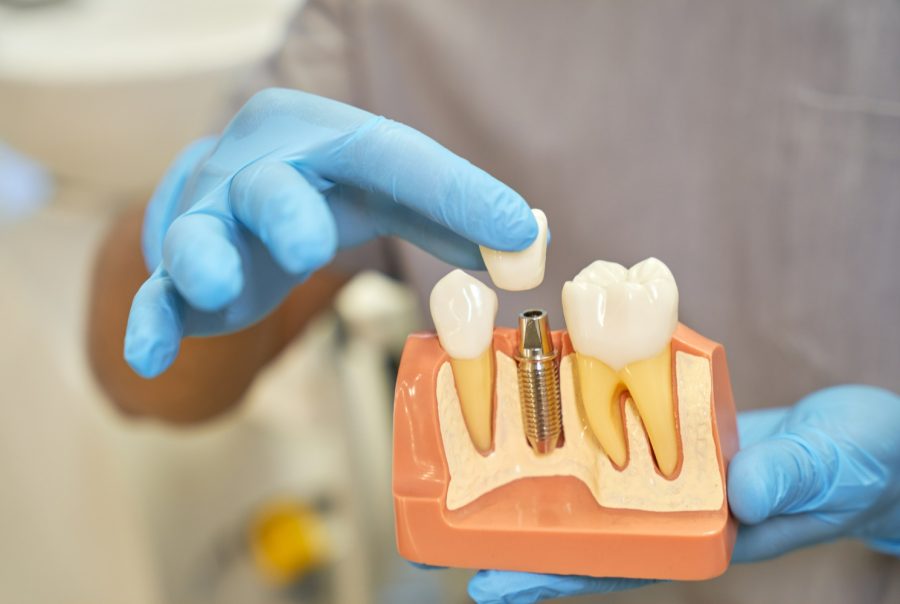Get information about dental bonding treatment with the detailed explanation of specialist dentist Seher Arseven.
Dental Bonding

Dental Bonding Turkey, Antalya.
Dental bonding is a procedure in dentistry where a tooth-colored composite resin material is applied to the teeth for aesthetic and restorative purposes. This treatment method is chosen to correct various dental imperfections, improve the color and shape of teeth, and enhance your smile.
How is Dental Bonding Performed?
The dental bonding process is a straightforward procedure completed in a single session, involving the following steps:
- Color Selection: Your dentist selects the shade of composite resin that best matches the natural color of your teeth. This ensures that the treated tooth blends seamlessly with the surrounding teeth.
- Tooth Surface Preparation: The surface of the tooth to be bonded is slightly roughened to improve the bonding material’s adherence. Then, a special liquid (bonding agent) is applied to the tooth surface to help the bonding material adhere more strongly to the tooth.
- Application and Shaping of Bonding Material: The selected shade of composite resin is applied in layers to your tooth by your dentist. Each layer is hardened with a special light. The dentist carefully shapes the bonding material until it reaches the desired shape and size.
- Hardening: After each layer is applied, a special light (usually blue light) is used to harden the bonding material. This increases the material’s durability and ensures it adheres firmly to your tooth.
- Polishing and Finishing: Once the bonding material is completely hardened, your dentist polishes the tooth and gives it its final shape. This ensures a natural appearance and smooth surface.
After completing these steps, you can immediately return to your daily routine without experiencing any pain or discomfort.
When is Dental Bonding Recommended?
Dental bonding is a widely used aesthetic and restorative treatment method in dentistry. It may be recommended by your dentist in the following situations:
Aesthetic Purposes:
- Small cracks or fractures in the teeth can be easily repaired with dental bonding to restore a natural tooth appearance.
- Gaps between front teeth (diastema) can be closed with bonding to achieve a more aesthetic smile.
- Minor shape irregularities or asymmetries in the teeth can be corrected with bonding.
- Surface stains or discolorations on the teeth can be covered with bonding, resulting in whiter teeth.
Restorative Purposes:
- Small cavities can be treated with dental bonding as an alternative to traditional fillings.
- Worn teeth due to teeth grinding or excessive brushing can be rebuilt with bonding.
- Root surfaces exposed due to gum recession can be covered with bonding to reduce sensitivity and improve aesthetic appearance.
Dental bonding can also be part of a comprehensive smile design in conjunction with other cosmetic dentistry procedures.
Dental Bonding Costs in Turkey
The cost of dental bonding varies depending on the number of teeth to be treated, the dentist’s experience, and the polyclinic’s location. As of 2024, the average cost of bonding per tooth in Turkey ranges from 100$ to 180$. For an accurate quote, it is recommended to consult your dentist.
Differences Between Bonding and Dental Veneers
Dental bonding and dental veneers are two different treatment methods used to enhance the appearance and function of teeth. While both aim to improve the look of teeth, they differ in application process, durability, cost, and usage.
Bonding involves applying a tooth-colored composite resin material to the teeth. This procedure is completed in a single session and is suitable for minor corrections. Issues like cracks, gaps, or discolorations in the teeth can be easily addressed with bonding. However, bonding material is less durable than veneers and may discolor or wear over time.
Dental veneers, on the other hand, are made from more durable materials like porcelain or zirconia and are bonded to the front surface of the tooth. Veneers are suitable for more extensive corrections and are more long-lasting. They are ideal for changing the shape, size, and color of teeth. However, veneers may require more removal of the natural tooth structure.
Advantages and Disadvantages of Dental Bonding
Dental bonding is a commonly chosen cosmetic treatment method in dentistry. However, like any treatment, it has its advantages and disadvantages.
Advantages:
- Cost-effective: It is a more economical option compared to other cosmetic dental procedures (such as porcelain veneers or zirconia crowns).
- Quick and Easy Application: Usually completed in a single session and the process is quite fast.
- Minimally Invasive: Very little or no tooth structure is removed, helping preserve the natural tooth structure.
- Natural Appearance: The tooth-colored composite resin blends perfectly with natural teeth, providing an aesthetic look.
Disadvantages:
- Durability: It is less durable than dental veneers and may discolor or wear over time.
- Staining: It can stain more easily than enamel, especially when exposed to staining substances like tea, coffee, and tobacco.
- Risk of Chipping: It is more prone to chipping compared to enamel, especially when biting hard objects or with teeth grinding.
- Limited Application: It is not suitable for extensive dental issues or restorations, more suited for minor corrections and cosmetic improvements.
- Regular Maintenance: Requires regular dental check-ups and professional cleaning to maintain its durability and aesthetic appearance.
Lifespan of Dental Bonding
The lifespan of dental bonding varies based on the individual’s oral hygiene, dietary habits, and factors such as teeth grinding. Generally, it lasts between 3 to 10 years.
Post-Treatment Care for Dental Bonding
To ensure the success of the treatment and prolong the lifespan of dental bonding, certain important points should be considered post-treatment:
First 24 – 48 Hours:
- The bonding material can be sensitive during the initial hardening phase, so avoid excessively hot or cold foods that may cause tooth sensitivity.
- Beverages like coffee, tea, and red wine, and foods with staining sauces can stain the bonding material.
- Sticky foods like gum and caramel can pull or dislodge the bonding material, while hard foods can cause it to chip.
Long-Term Care:
- Brush your teeth at least twice a day and do not neglect to use dental floss. Preventing plaque buildup around the bonding material is crucial.
- Teeth grinding and clenching can damage the bonding material. If you have such habits, your dentist may recommend protective measures like a night guard.
- Your dentist will recommend regular check-ups to monitor the bonding and detect any potential issues early. These check-ups are typically every six months.
- Professional teeth cleaning at least twice a year is recommended to prevent tartar and plaque buildup.
By following these recommendations, you can extend the lifespan of your dental bonding and maintain your aesthetic smile for a longer period.
Seher Arseven
She graduated from Hacettepe University Faculty of Dentistry in 2016. Between 2016 and 2018, she worked at Liv Hospital. After completing a six-year training program at Gazi University Faculty of Dentistry, Department of Periodontology, she obtained her PhD. She specializes in aesthetic gingival surgeries, the treatment of gingival recessions, and gingival diseases, with her thesis focusing on peri-implantitis and implant surgeries. She has numerous national and international publications related to peri-implantitis and implant treatments. Additionally, she is skilled in advanced bone surgeries.

